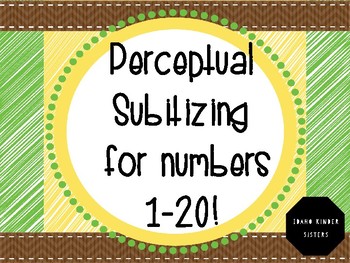Perceptual Subitizing Powerpoint Slideshow for Numbers 1-20
- PDF
Description
This product contains over 75 slides to help students become confident with subitizing. Use this presentation as a transitional PowerPoint, change it to a flipchart or mirror to promethean board(for interaction) to help strengthen perceptual subitizing skills using dots and ten frames. Students will love using this tool as they decide what each slide containing a group of dots or ten frames represents with the corresponding answer on the next slide.
*Subitizing involves recognizing a number of items or objects in a collection without counting or delay. It is a fundamental math skill important in the development process of students.
Teaching how to subitize helps develop capabilities such as counting on, composing and decomposing numbers, unitizing and well as an understanding of place value. All of these are valuable components to building a strong number sense.
Great activity to use for brain breaks or a time filler!





